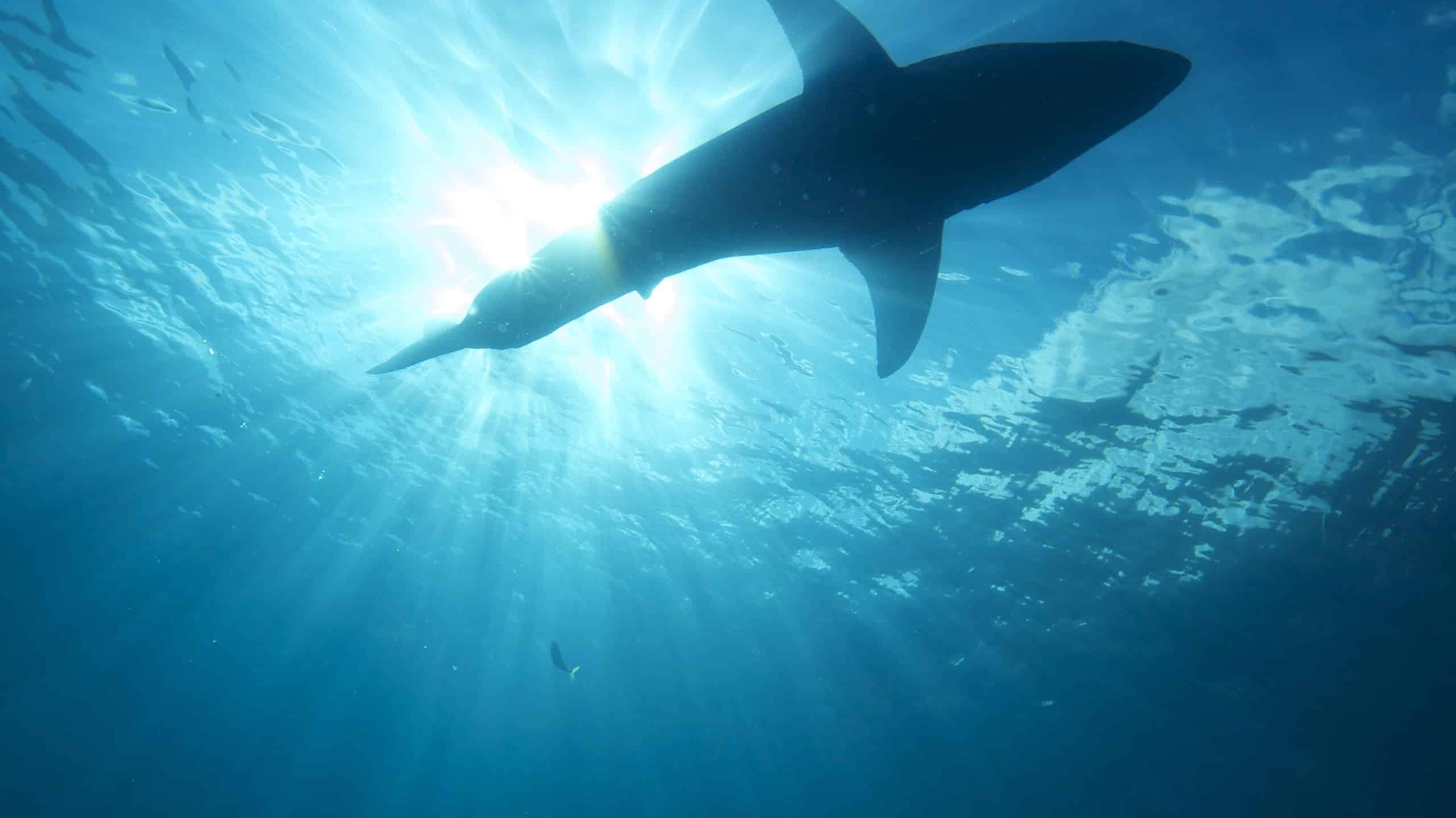Beautiful Monterey Bay lies along the Pacific Ocean on the Central Coast of California. While there are several species of sharks in Monterey Bay, including the great white shark, it is still safe for swimming. Shark attacks are incredibly rare, according to the University of Florida, which collects global data about shark attacks in its International Shark Attack File. According to this file, the average number of unprovoked shark attacks worldwide from 2017-2021 was 70 per year. In 2022, only five fatal shark attacks occurred worldwide. When compared to how many people swim in the ocean each year, the odds of an attack are exceedingly rare. In fact, rip currents pose a much greater risk to swimmers.
Although attacks are rare, it is still important to take precautions to reduce the risk of a shark encounter. This article explores shark sightings and attacks in Monterey Bay, along with guidelines for safety.
Monterey Bay Location

Southern Monterey Bay is home to beautiful sand dunes.
©Anne M Vallone/Shutterstock.com
Monterey Bay is on the Central Coast of California, an area that stretches from Santa Cruz County on the northern end of Monterey Bay down to Ventura County. The city of Santa Cruz is on the north end of the bay, while the city of Monterey is on the south end. The Monterey Peninsula sits at the southern end.
Sharks in Monterey Bay
There are numerous species of sharks in Monterey Bay, including the great white shark. Great white sharks, known for their massive size, are found worldwide. They inhabit all oceans except the Arctic and Southern Oceans. According to the California Department of Fish and Wildlife, great white sharks have been responsible for 185 of the 209 shark incidents in California since 1950. An incident is defined as a shark touching a person or their surfboard, paddleboard, or kayak. Additionally, great white sharks were responsible for all 15 of the incidents that involved human fatalities. This is at least partially due to their massive size and power.
Fatal Shark Attacks in Monterey Bay
Let’s explore how frequent great white shark sightings and attacks are in Monterey Bay. First, two of the 15 human fatalities from shark attacks in California since 1950 were in Monterey Bay. These attacks took place in Pacific Grove, Monterey County, in 1952 and in Watsonville, Santa Cruz County, in 2020. The 1952 attack was the first documented fatal shark attack on the California coast, according to the University of Hawaiʻi at Mānoa. This attack took place while the boy, Arthur Barry Lyle Wilson, age 17, was swimming with his friends. The 2020 fatal attack in Watsonville was on a man named Ben Kelly, age 26, while he was surfing.
Although these fatal attacks are tragic and should be remembered, they are not necessarily a cause for alarm. As previously stated, fatal shark attacks are rare. The fact that only 15 fatal attacks have been recorded in California history means a person is far more likely to die in a different kind of accident. For example, according to the California Highway Patrol, 3,737 people lost their lives to traffic accidents in California in 2019.
Shark Sightings in Monterey Bay

Great white sharks can be identified from a distance by their massive size and unique dorsal fin.
©iStock.com/Alessandro De Maddalena
Shark sightings on the California coast are far more common than shark incidents, and will become more common as oceans get warmer, according to a study by the Monterey Bay Aquarium. This study tracked great white shark migration for two decades and found that the population in Monterey Bay is increasing due to warmer ocean temperatures. Let’s explore how this impacts swimming safety in Monterey Bay, and how to reduce the risk of an encounter.
Is Monterey Bay Safe for Swimming?
While shark encounters are rare, they do happen. It is impossible to completely eliminate the risk of an encounter when swimming in shark territory. However, beachgoers can take steps to reduce the risk of an encounter. The Florida Museum, of the University of Florida, provides information on how to stay safe as a swimmer in shark territory. Using their massive collection of worldwide data about shark encounters, they provide scientifically backed guidelines for minimizing risk.
The first way to minimize the risk of a shark attack is to swim in groups, since sharks are more likely to attack individuals. Secondly, stay close to shore, since being further away from shore can isolate you and also means you are further away from help. Third, avoid swimming in the dark or during twilight hours. Additionally, avoid swimming if you are bleeding. Swimming during menstruation is okay, however, and does not appear to increase the chance of an encounter according to the University of Florida’s data. Finally, avoid swimming where sharks have recently been seen, and leave the water if you see a shark. Never harass sharks (or any wild animal). Thirty-two of the 89 total shark bites in 2022 were provoked, meaning the human initiated the contact with the shark.
Whether or not you choose to swim in Monterey Bay, or any shark territory, is a personal decision. However, if one takes steps to minimize the risk, the chances of a shark encounter are very low.
Thank you for reading! Have some feedback for us? Contact the AZ Animals editorial team.








